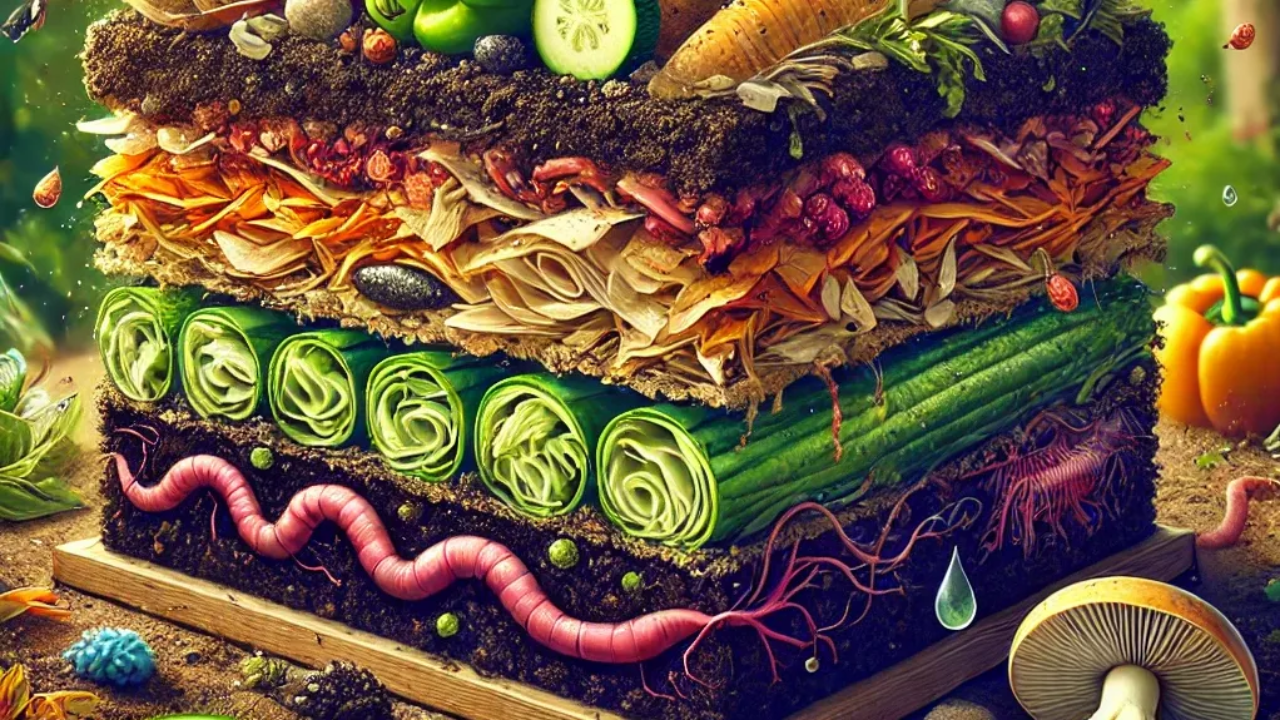The Science Behind Composting: How Microorganisms Transform Your Scraps
Dec 29, 2024
Have you ever wondered what really happens in your compost pile? Behind the seemingly simple process of turning kitchen scraps and yard waste into rich, dark soil lies a fascinating microscopic universe. Billions of tiny organisms work tirelessly to break down organic matter, creating nature's perfect recycling system.
The Microscopic Workforce: Meet Your Decomposition Team
Your compost pile is home to an intricate ecosystem of decomposers, each playing a crucial role in the transformation process. Bacteria, the smallest but most numerous members of this team, are the primary workhorses of decomposition. These microscopic organisms multiply rapidly in favorable conditions, generating heat through their metabolic processes – that's why active compost piles feel warm to the touch!
Fungi join the bacterial workforce, extending their thread-like hyphae throughout the pile. These remarkable organisms excel at breaking down tough organic materials like lignin and cellulose in woody materials and paper products. Think of fungi as nature's specialized demolition crew, equipped with unique enzymes to tackle the most challenging materials.
Meanwhile, earthworms serve as the pile's engineers, creating channels that improve aeration and water distribution. As they digest organic matter, their castings enrich the compost with beneficial microorganisms and nutrients in plant-available forms. A single earthworm can process up to its own weight in organic material every day!
The Chemistry of Decomposition: Balancing Carbon and Nitrogen
Successful composting relies heavily on maintaining the right balance between carbon-rich "brown" materials (like dried leaves and paper) and nitrogen-rich "green" materials (such as kitchen scraps and fresh grass clippings). This ratio, ideally around 30:1 carbon-to-nitrogen, provides the optimal diet for composting microorganisms.
Think of carbon as the microbes' carbohydrates – their primary energy source. Nitrogen, on the other hand, provides the protein-building blocks these organisms need to grow and reproduce. Too much nitrogen can lead to a smelly, anaerobic mess, while too much carbon slows down the decomposition process significantly.
The Vital Role of Oxygen and Moisture
Just like us, composting microorganisms need oxygen to thrive. Proper aeration ensures these aerobic decomposers can break down organic matter efficiently while preventing the growth of anaerobic bacteria that produce unpleasant odors. The ideal compost pile should have the moisture content of a wrung-out sponge – about 40-60% moisture.
When oxygen levels drop too low, anaerobic decomposition takes over, slowing down the process and potentially creating methane, a potent greenhouse gas. This is why turning your compost pile regularly is so important – it reintroduces oxygen and redistributes moisture throughout the materials.
Fascinating Facts About Your Microscopic Helpers
Here are some incredible insights about composting microorganisms that might surprise you:
- Some thermophilic (heat-loving) bacteria in your compost pile can survive temperatures up to 170°F (77°C)! These high temperatures help kill pathogens and weed seeds, making your compost safer for garden use.
- Certain fungi in your compost pile can communicate with each other through underground networks, sharing resources and information about available nutrients.
- In one teaspoon of healthy compost, there can be:
- 1 billion bacteria
- Several yards of fungal hyphae
- Several thousand protozoa
- 20-30 beneficial nematodes
- About 28% of what we throw in landfills could be composted. Composting this waste instead could reduce methane emissions equivalent to taking over 2 million cars off the road.
- New York City runs one of the largest composting programs in the country, processing over 1.7 million pounds of food waste every week through various community composting sites.
From Waste to Wonder
Understanding the science behind composting reveals the remarkable complexity of this natural process. By providing the right conditions for these microscopic decomposers – proper carbon-to-nitrogen ratios, adequate moisture, and sufficient oxygen – we can harness their power to transform our organic waste into valuable soil amendment.
Next time you add kitchen scraps to your compost bin, take a moment to appreciate the billions of tiny organisms that spring into action, working tirelessly to complete nature's recycling cycle. Through their efforts, what we consider waste becomes black gold for our gardens, closing the loop in our local ecosystem.
The impact of home composting extends far beyond your garden. In the United States alone, food scraps and yard waste make up over 30% of what we throw away. When these organic materials end up in landfills, they decompose without oxygen, producing methane, a greenhouse gas 25 times more potent than carbon dioxide. By composting at home, a single household can divert an average of 500 pounds of organic waste from landfills annually. This simple act not only reduces methane emissions but also decreases the need for garbage trucks on our roads, lowering carbon emissions from transportation. Moreover, using compost in your garden reduces the need for chemical fertilizers and helps soil retain water, creating a cascade of environmental benefits.
It's a powerful reminder that individual actions, when multiplied across millions of households, can create significant positive change for our planet.

